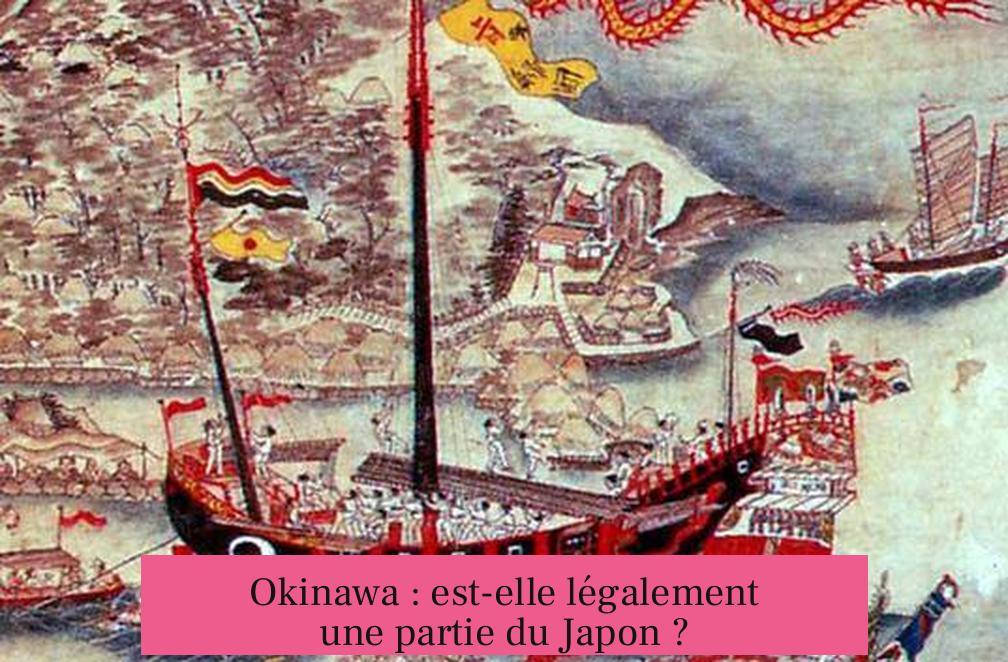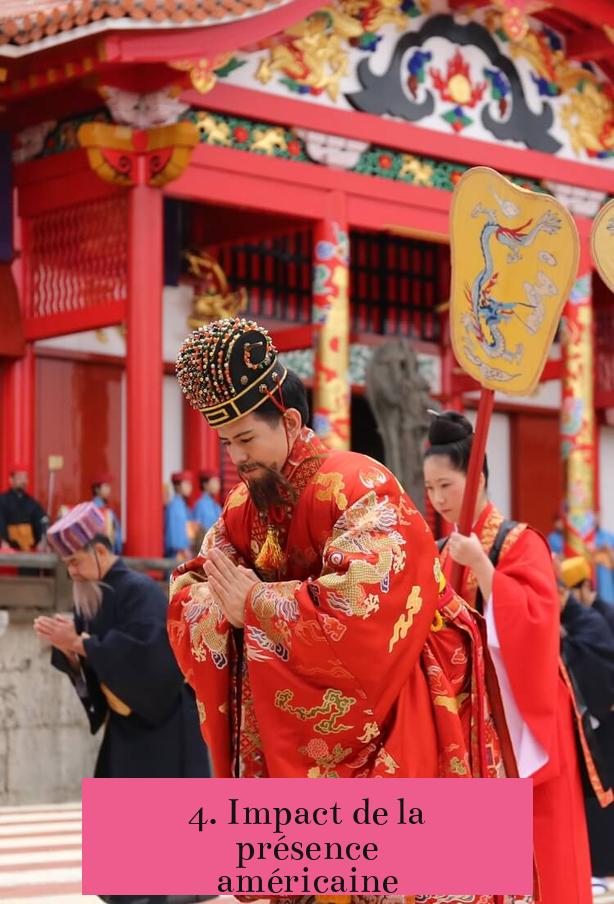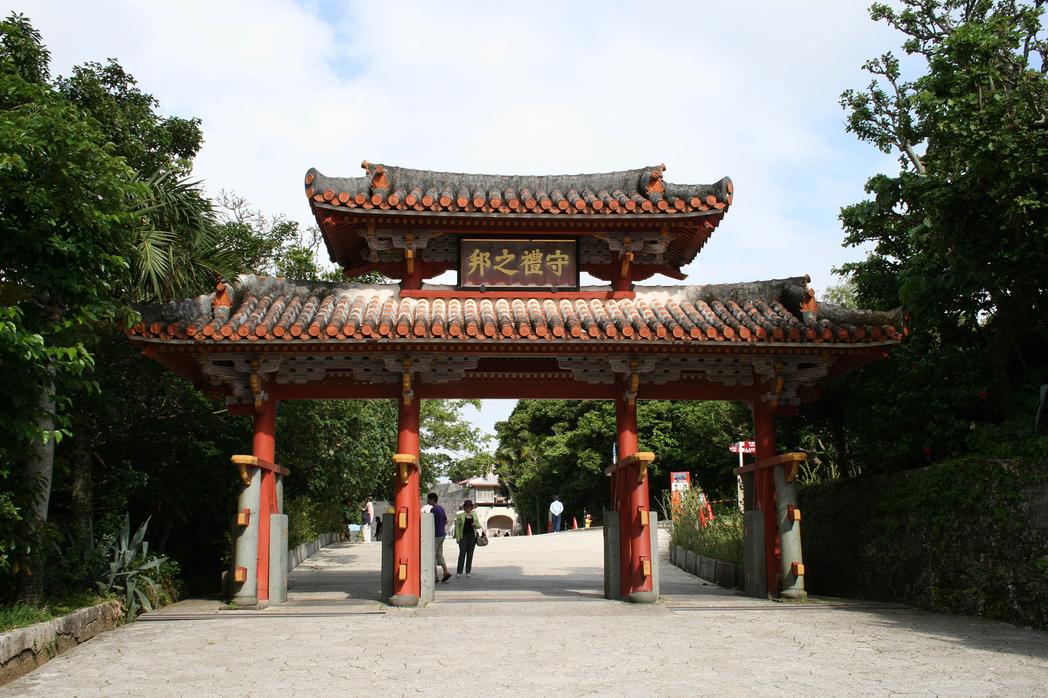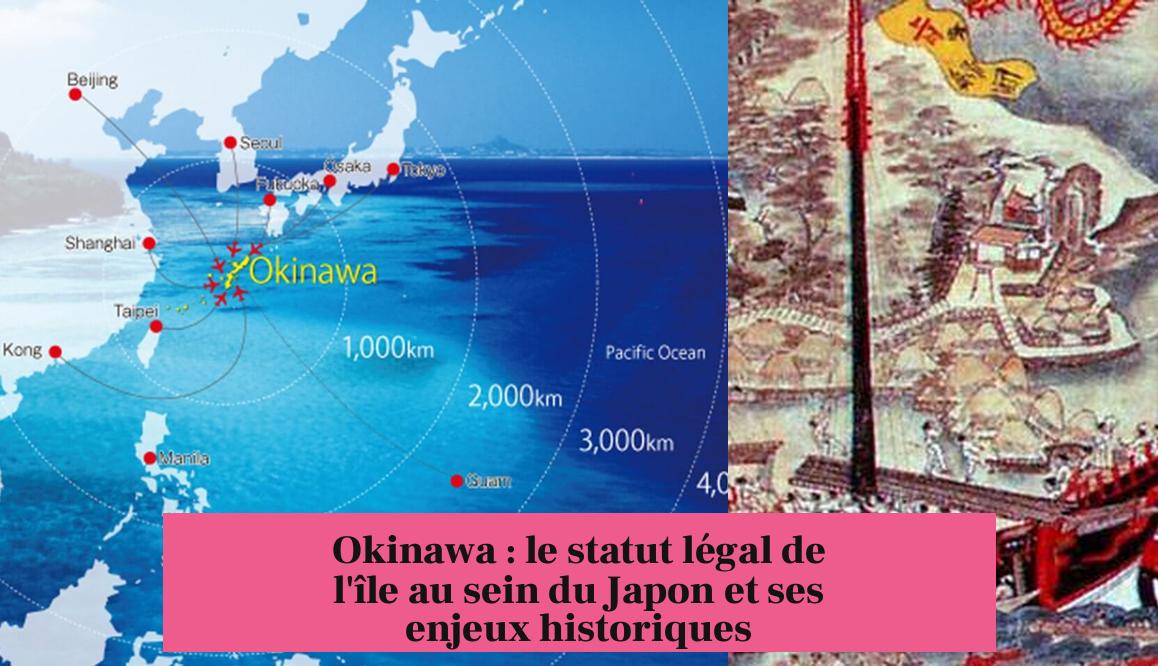Okinawa : est-elle légalement une partie du Japon ?

Oui, Okinawa est légalement une partie du Japon. Cette île fait partie de la préfecture d’Okinawa, la plus méridionale du pays. Son appartenance juridique est confirmée tant par l’administration japonaise que par des accords internationaux.
1. Statut légal et administratif d’Okinawa
Okinawa est officiellement la préfecture la plus au sud du Japon. Elle regroupe plus de 150 îles, dont Okinawa, la plus grande. Le Japon exerce l’autorité administrative sur cette région depuis la fin de l’occupation américaine en 1972.
- Avant 1972, Okinawa était sous administration américaine, suite à la Seconde Guerre mondiale.
- En 1972, les États-Unis ont rendu Okinawa au Japon, rétablissant la souveraineté japonaise.
- Les citoyens d’Okinawa sont japonais, leur nationalité n’a jamais été américaine, même sous occupation américaine.
2. Histoire et intégration au Japon
Okinawa était autrefois le royaume indépendant des Ryukyu, un État tributaire de la Chine impériale. En 1609, il est placé sous influence japonaise après l’invasion de Satsuma.
En 1879, le gouvernement Meiji annexe officiellement les îles Ryukyu, créant la préfecture d’Okinawa. Le roi Shō Tai est déposé, et le royaume est dissous.
La bataille d’Okinawa (avril-juin 1945) a été l’un des combats les plus sanglants du théâtre pacifique. Après la Seconde Guerre mondiale, l’archipel reste sous contrôle américain jusqu’en 1972.
3. Aspects géopolitiques et disputes territoriales
Le traité de paix de San Francisco (1951) place officiellement les îles Senkaku sous administration américaine via Okinawa. Ces îles restent partie du Japon selon ce traité.
Depuis 2013, la Chine conteste la souveraineté du Japon sur Okinawa, notamment à cause du passé indépendant des Ryukyu et des revendications sur les îles Senkaku. Cependant, les États-Unis ont reconnu ces îles comme parties intégrantes des Ryukyu durant la guerre.
- Le Japon maintient que Okinawa et les îles Senkaku lui appartiennent légalement.
- Le gouvernement japonais exerce pleinement sa souveraineté sur Okinawa et sa population.
- La présence militaire américaine reste importante, avec 32 installations sur Okinawa, mais cela ne remet pas en cause la souveraineté japonaise.
4. Impact de la présence américaine

La base militaire américaine sur Okinawa représente un enjeu sociopolitique majeur. Elle affecte l’environnement, la vie sociale et la politique locale. Malgré cela, la souveraineté japonaise est incontestée.
Tableau récapitulatif : Okinawa et son statut
| Aspect | Détail |
|---|---|
| Propriété légale | Japonaise depuis 1972 après occupation américaine |
| Statut actuel | Préfecture japonaise, partie intégrante du territoire national |
| Population | Citoyens japonais, non américains |
| Conflits territoriaux | Revendiations chinoises, disputes sur les îles Senkaku |
| Présence militaire | Bases américaines, coopération avec forces japonaises |
Points essentiels à retenir
- Okinawa est officiellement une préfecture japonaise, avec souveraineté entière depuis 1972.
- Son passé complexe inclut un royaume indépendant puis une annexion à la fin du XIXe siècle.
- Les États-Unis ont administré Okinawa après la Seconde Guerre mondiale, sans transférer la citoyenneté américaine aux habitants.
- Des tensions territoriales persistent, notamment autour des îles Senkaku, revendiquées aussi par la Chine.
- La présence militaire américaine reste importante mais ne remet pas en cause la légalité de la souveraineté japonaise sur Okinawa.
Is Okinawa Legally Part of Japan? Unveiling the Island’s Status with a Pinch of Okinawan Spirit
Yes, Okinawa is legally part of Japan. This southernmost prefecture stands under Japanese sovereignty, governed administratively by Japan and home to Okinawan citizens recognized as Japanese nationals. After decades of complex history involving independence, annexation, war, and occupation, Okinawa is firmly woven into Japan’s national fabric.
But is it just a black-and-white legal fact? Not quite. Okinawa’s story is a vibrant tapestry of culture, historic twists, and geopolitical drama, all peppered with a dash of local uniqueness that makes Okinawa more than just “Japanese soil.” Grab your imaginary sandals, and let’s explore the fascinating status of Okinawa with smiles, facts, and maybe even a virtual sip of awamori!
A Historical Odyssey: From the Ryukyu Kingdom to Japanese Sovereignty

Long before the prefecture label, Okinawa wasn’t “part of Japan.” It was the Ryukyu Kingdom—an independent realm with thriving trade ties across East Asia, particularly with China. Imagine a bustling archipelago ruled by kings centered in the famous Shuri Castle. For centuries, Ryukyu thrived as a tributary state of Ming China, crafting a unique blend of influences and an identity all its own.
That autonomy changed in 1609. The Satsuma clan from the Japanese mainland invaded and brought Ryukyu under Japan’s shogunate influence—politically subordinate but still maintaining a facade of independence to continue its lucrative trade relations.
Fast forward to 1879: the Meiji government officially annexed the Ryukyu kingdom, abolishing the monarchy and erecting Okinawa Prefecture. King Shō Tai was forced to relocate to Tokyo, marking Okinawa’s formal absorption into modern Japan.
Wartime Trials and American Occupation
World War II cast a dark shadow over Okinawa. The island was a brutal frontline during the Pacific War. Between April and June 1945, the Battle of Okinawa raged for 82 days, resulting in immense military and civilian losses—estimated at 95,000 Japanese troops and over 20,000 American soldiers. Civilians endured horrific conditions, caught between violent clashing forces.
Post-war, Okinawa’s fate took another twist. Unlike the rest of Japan, which soon regained sovereignty, Okinawa came under U.S. military control. From 1945 to 1972, the United States administered the Ryukyu Islands, with their citizens designated Ryukuan nationals under American law—not U.S. citizens. This occupation established a sprawling U.S. military presence that persists today.
In 1972, Okinawa was officially returned to Japan. The Japanese government resumed full administrative control, confirming Okinawa’s legal status as part of Japan—but with enduring American military bases covering roughly 25% of the island.
Cultural Identity: Okinawan First, Japanese Second?
Legally Japanese, yes. But culturally? Okinawans often see themselves as distinct. Most are proud Japanese citizens, yet many identify as Okinawan first. Why? Because Okinawa nurtures a rich, separate cultural identity, from its language and music to its food and festivals.
The Okinawan language, part of the Northern Ryukyuan language group, still survives, particularly in the southern islands. It sounds quite different from standard Japanese—enough to make your ears perk up. Locals also greet you with “Haisai” (men) or “Haitai” (women), no matter the time of day, a charming signature of their warm hospitality.
Music features the sanshin—a three-stringed instrument whose soulful tones tell stories of the islands. Festivals like the Okinawa Zento Eisa Matsuri bring energetic dances and drums to life, attracting visitors and preserving traditions.
Food? Okinawa boasts uniquely healthy dishes such as goya champuru, a stir-fry with bitter melon, and Okinawa soba noodles. Interestingly, the island’s inhabitants are known for longevity, often linked to their subtropical diet and lifestyle.
Geopolitical Chess Games and Territorial Wrangling
Beyond cultural fascination lies geopolitical tension. The uninhabited Senkaku Islands, under Okinawan administration, lie remotely in the East China Sea. Their sovereignty is contested, especially by China, which questions Japan’s control by citing Okinawa’s past independence as the Ryukyu Kingdom.
However, post-WWII treaties, notably the San Francisco Peace Treaty, reaffirmed Okinawa—and by extension, territories like the Senkakus—as Japanese land. Key U.S. military documents from the war era, such as the Monograph on Japan, confirm American recognition of these islands as part of the Ryukyu archipelago, reinforcing Japan’s claim.
As you can see, Okinawa sits at an international crossroads, blending history, diplomacy, and strategic military interests. Speaking of which…
The American Military Footprint: Friend, Foe, or Unwanted Neighbor?

You can’t talk about Okinawa without mentioning its heavy U.S. military presence. With 32 military facilities scattered across the islands, including a joint-use facility with Japan’s Self-Defense Forces, U.S. bases dominate a significant part of the land.
From the Korean War to the Iraq conflict, Okinawa has served as a vital staging ground. The island’s strategic location means U.S. forces rely heavily on its ports and airports to transport supplies and conduct operations.
But not all is rosy. The extensive military footprint has sparked social and environmental issues for locals. Oil spills, toxic chemical pollution—especially from PFAS contaminants in the 1970s and 80s—have damaged waterways and harmed residents. Incidents involving U.S. personnel, including accusations of crimes, have inflamed local sentiment.
Legal jurisdiction remains a thorny issue. U.S. personnel accused of crimes committed on Okinawa often escape local prosecution, heightening tensions between Okinawans and the military presence.
Living in Today’s Okinawa: A Unique Blend of Tradition and Modernity
Today, Okinawa is a tourist magnet, celebrated for its stunning white-sand beaches and crystal-clear seas. Life here offers an appealing mix of subtropical climate and rich history, making it unique within Japan.
The cost of living in Okinawa remains fairly affordable compared to Tokyo or Osaka. Residents enjoy a slower pace, surrounded by natural beauty and a mild climate.
While the primary language is Japanese, English is not uncommon in tourist areas. Hotels and support centers cater well to international visitors, including Americans—who come full circle from military occupiers to tourists savoring awamori, Okinawa’s distinctive distilled rice liquor.
Who Are the Okinawans, Anyway?
| Aspect | Description |
|---|---|
| Citizenship | Japanese citizens since reversion in 1972 |
| Ethnicity | Ryukyuan ethnic group alongside mainland Japanese |
| Language | Primarily Japanese; Okinawan (Northern Ryukyuan) languages spoken by some |
| Culture | Distinct traditional music (sanshin), festivals, food, and greetings |
| Identity | Many consider themselves Okinawan first, Japanese second |
This nuanced identity sparks questions. Is Okinawa just another prefecture? Or is it a proud region holding onto a unique heritage? These layers enrich the ongoing dialogue of Okinawa’s place within Japan and the Pacific.
Final Thoughts: Okinawa – Legally Japanese, Spiritually Unique
So, is Okinawa legally part of Japan? Undoubtedly yes. The island prefecture is integrated into the Japanese state, governed by Japanese law. But Okinawa is far from a cookie-cutter prefecture.
Its history as the Ryukyu Kingdom, its wartime sufferings, complex postwar diplomacy, and ongoing cultural distinctiveness all contribute to a special status—something that no law or treaty can fully capture.
Okinawa challenges simple labels. It is Japanese, yet not quite the same. An island where history, identity, strategic importance, and cultural pride weave a captivating narrative. For anyone curious about the Pacific and Japan, Okinawa offers a story worth discovering.
And next time you think “Is Okinawa a part of Japan?”—remember it’s also a bit of its own island world. Like sushi’s little sibling with a tropical twist, Okinawa keeps inviting explorers to dive deeper.
Okinawa fait-elle officiellement partie du Japon ?
Oui, Okinawa est officiellement une préfecture japonaise. Elle est située à l’extrême sud du Japon et fait partie intégrante de l’administration japonaise depuis son retour en 1972.
Pourquoi Okinawa a-t-elle une histoire distincte du reste du Japon ?
Okinawa était autrefois le Royaume de Ryukyu, un État indépendant avec ses propres liens commerciaux, notamment avec la Chine. Ce royaume a été intégré au Japon en 1879 après l’invasion de Satsuma.
Quelle a été la situation d’Okinawa après la Seconde Guerre mondiale ?
Après la guerre, Okinawa a été sous administration militaire américaine jusqu’en 1972. Ce n’est qu’à cette date que l’île est revenue sous contrôle japonais officiel.
Les habitants d’Okinawa sont-ils citoyens japonais ?
Oui, tous les Okinawans sont citoyens japonais. Sous l’occupation américaine, ils n’étaient pas considérés comme citoyens US, mais depuis la réintégration, ils bénéficient de la citoyenneté japonaise.
Quelle est la position juridique des îles Senkaku par rapport à Okinawa ?
Les îles Senkaku, administrées dans le cadre des îles Ryukyu, sont reconnues comme faisant partie du territoire japonais. Cette reconnaissance remonte à la période de la Seconde Guerre mondiale et a été confirmée après le retour d’Okinawa au Japon.

